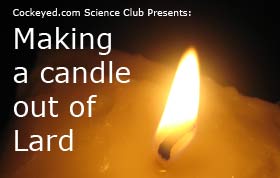

 When I was fresh out of college, broke and trying to escape from a pile of credit card debt, I would sometimes troll the aisles of Safeway, looking for very cheap food and very cheap entertainment. One item that caught my attention was in the Mexican foods section. They were very cheap, but damn, they tasted terrible. Soon after buying one, I stuck my finger inside and realized that the wax in these candles was different. It was soft, like Vaseline taffy. I assumed that this was an inferior candle, but it burned just fine, casting hours of golden light onto my masters of origami collectors diorama. |
 I didn't think much of it until years later, when I inadvertently CRUSHED A CANDLE WITH MY BARE HANDS. That candle turned out to have been made of waxy crumbs, coated with an eggshell of solid wax. I wondered, had cheap-candle engineering progressed even further? What was next, candles made of used motor oil, bald tires and lard? My interest was piqued. I had to try to make a candle out of lard.
|
 The first component is fat, known as "tallow". The second component is high-protein solids, known as "greaves".
|
 The fat is sold in one-pound blocks, like butter, and in tubs, like margarine. I had a hand in clearing up a typo on the Armour Lard box back in 2003. Stacy bought me a nice new block of lard. It was $1.30. I was a little troubled to find the perfect wick. I was not naive enough to think that this was just a simple piece of string. Modern candle wicks are specially engineered to curl back onto the flame. After a fruitless trip to an arts and crafts store, I found the "obvious" solution: I cut open another candle and borrowed that wick. |
 With a knife that was neither sharp nor hot, I sliced open the block of lard and dropped in the wick. |
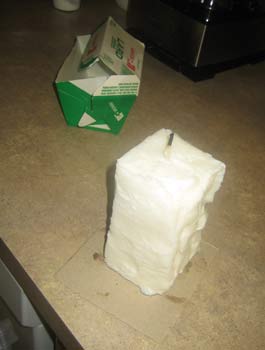
I smooshed the block back together and stood it up on one end. It looked great! This was totally going to work. Lard is soft, like a block of peanut butter, but it kept it's shape well enough to survive the journey to the fireplace. |
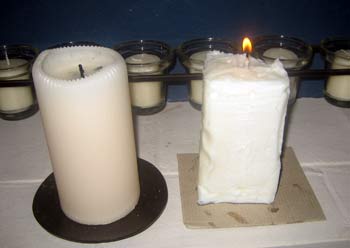 Once it was in place I lit the wick.
I watched the flame crawl down the wax-impregnated wick and hit the lard. It melted a little pool and... |
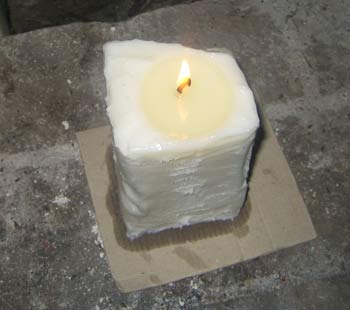 The flame wasn't abnormally large and I couldn't see any more smoke than rises from a regular candle. I moved the candle into the fireplace, where it was a little less of a
fire hazard. |
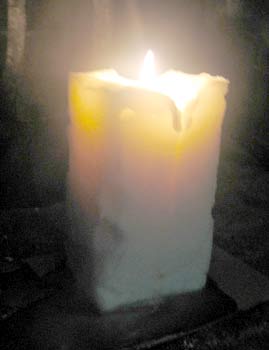 And over. And over. The melted oil began to spill over the edge of the candle and onto the floor of the fireplace. My first reaction was to poke at the lard, trying to hot-sculpt a dyke. This impossible plan was abandoned and I moved to Plan B: wrapping the block with a wall of paper. |
This worked fine. The melted lard was effectively trapped and was feeding the wick again. The candle burned for several hours at a rate that seemed comparable to a regular candle. Could I make a candle out of bikini wax? |
Making a candle out of lipstick | Infinite Candelabra | heat check | cockeyed science club | cockeyed home | Contact Rob | July 14th, 2006